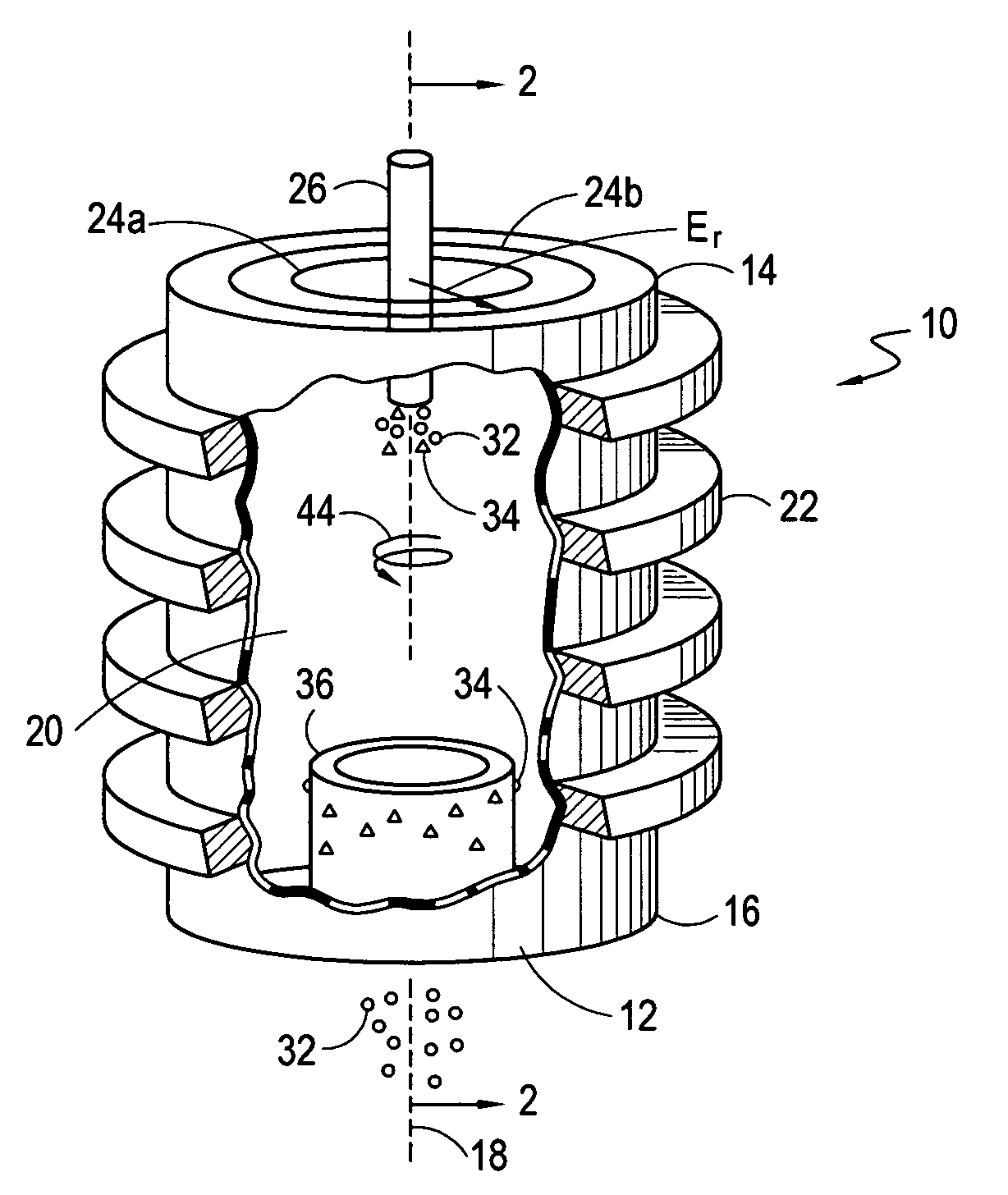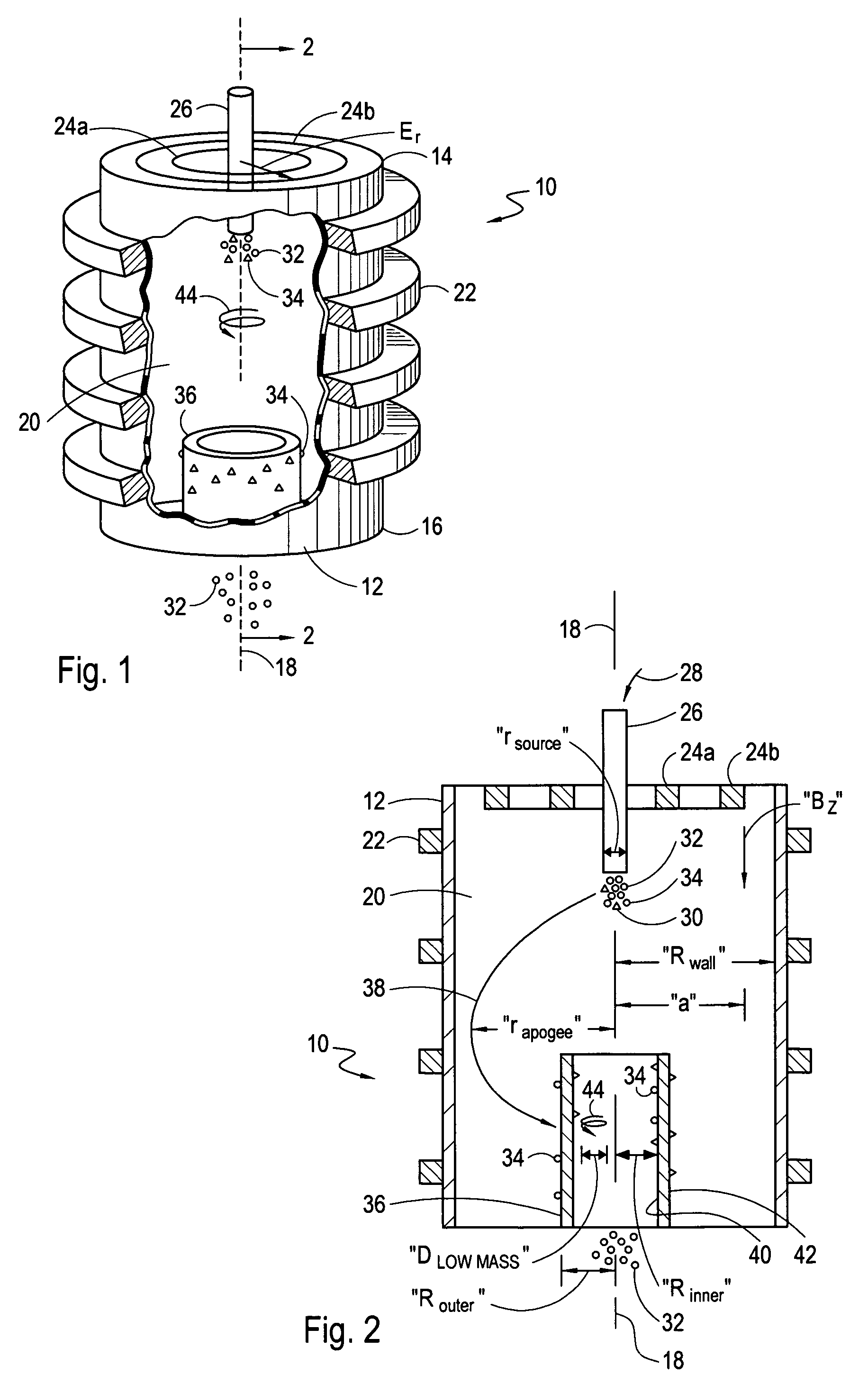Mass separator with controlled input
a multi-constituent material and separator technology, applied in the direction of filtration separation, separation process, centrifugal separation, etc., can solve the problems of energy adversely affecting the separation factor of systems, difficult separation of one isotope from another using chemical techniques, etc., to achieve close mass-to-charge ratio, improve separation factor, and efficient separation
- Summary
- Abstract
- Description
- Claims
- Application Information
AI Technical Summary
Benefits of technology
Problems solved by technology
Method used
Image
Examples
Embodiment Construction
[0021]Referring initially to FIG. 1, a mass separator for separating the constituents of a multi-constituent material, such as a material that contains more than one isotope of a given chemical element is shown and generally designated 10. As shown, the separator 10 includes an enclosing wall 12 that extends from a first end 14 to a second end 16. As further shown, the wall 12 is typically formed as an elongated cylinder of inner radius, “Rwall”, that is centered on a longitudinal axis 18. It is further shown that the wall 12 surrounds a cylindrical chamber 20.
[0022]Referring still to FIG. 1, it can be seen that a plurality of coils 22, in this case four coils 22, are positioned on the outside of wall 12 to generate a uniform magnetic field, Bz, (field direction shown in FIG. 2) throughout the chamber 20. In a typical embodiment of the separator 10, the magnetic field, Bz, is substantially uniform both azimuthally and axially, and is directed substantially parallel to the longitudin...
PUM
| Property | Measurement | Unit |
|---|---|---|
| inner radius | aaaaa | aaaaa |
| mass to charge ratio | aaaaa | aaaaa |
| outer radius | aaaaa | aaaaa |
Abstract
Description
Claims
Application Information
 Login to View More
Login to View More - R&D
- Intellectual Property
- Life Sciences
- Materials
- Tech Scout
- Unparalleled Data Quality
- Higher Quality Content
- 60% Fewer Hallucinations
Browse by: Latest US Patents, China's latest patents, Technical Efficacy Thesaurus, Application Domain, Technology Topic, Popular Technical Reports.
© 2025 PatSnap. All rights reserved.Legal|Privacy policy|Modern Slavery Act Transparency Statement|Sitemap|About US| Contact US: help@patsnap.com


